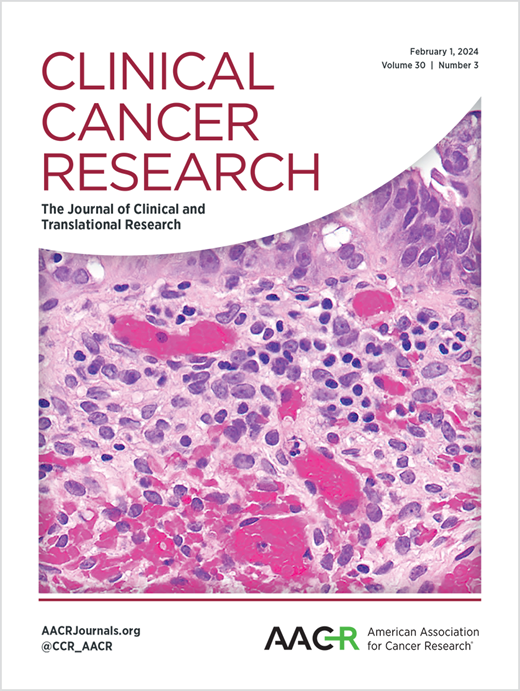The dynamically evolving cell states and ecosystem from benign nevi to melanoma
IF 10
1区 医学
Q1 ONCOLOGY
引用次数: 0
Abstract
Purpose: Approximately 30% of non-chronically sun-damaged melanomas originate from nevi, yet the dynamic changes and crucial mechanisms driving the transition from benign nevi to melanoma remain elusive. Experimental Design: Here, we performed single-cell transcriptome sequencing on multiple paired tissue sites from 5 patients diagnosed with melanoma arising in congenital melanocytic nevi (CMN), identifying four distinct states of melanocyte subpopulations during the progression from nevi to melanoma, characterized by dynamic changes in their functions and regulatory pathways. Results: In the nevi state, interferon regulatory factor 1 (IRF1) was specifically upregulated in melanocytes, fibroblasts, and endothelial cells (ECs), potentially activating immune surveillance in the microenvironment. Conversely, the critical inhibitory checkpoint HLA-E for NK cells exhibited high expression in a cluster of malignant melanocytes and fibroblasts enriched in melanoma. This interaction with ligands expressed in NK cells could potentially serve as a key factor leading to immune evasion. In malignant melanoma samples, we detected high expression of Midkine (MDK) in melanocytes. It is a pivotal factor that facilitates melanoma invasion and malignant transformation, potentially through interaction with ECs to stimulate angiogenesis. The targets identified in our study are crucial factors in detecting the malignant transformation of nevi. Ultimately, we developed a malignant progression model capable of predicting patient prognosis and malignant progression status using bulk RNA sequencing (RNA-seq) data. Conclusions: Our study provides a high-resolution atlas of the malignant transformation of melanoma from nevi and highlights potential targets for further investigation.求助全文
约1分钟内获得全文
求助全文
来源期刊

Clinical Cancer Research
医学-肿瘤学
CiteScore
20.10
自引率
1.70%
发文量
1207
审稿时长
2.1 months
期刊介绍:
Clinical Cancer Research is a journal focusing on groundbreaking research in cancer, specifically in the areas where the laboratory and the clinic intersect. Our primary interest lies in clinical trials that investigate novel treatments, accompanied by research on pharmacology, molecular alterations, and biomarkers that can predict response or resistance to these treatments. Furthermore, we prioritize laboratory and animal studies that explore new drugs and targeted agents with the potential to advance to clinical trials. We also encourage research on targetable mechanisms of cancer development, progression, and metastasis.
 求助内容:
求助内容: 应助结果提醒方式:
应助结果提醒方式:


